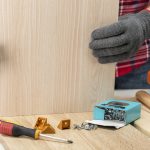Whether at work, at university or at home, we sometimes get a bit of ‘paperwork’. If there are few documents, notes or other similar printed or saved pages, then we are able to control the mess very quickly. It is worse when it seems impossible to find anything quickly and it takes too long for us to be able to talk about efficient operation. However, colourful self-adhesive cards are some help in this regard, and for many people they are not only a convenience, which is applied sporadically, but even an element of everyday life. Perhaps it is about the convenience of use, or maybe it is about the ease with which we later come to use any documents, notes or books in which we use this multicolour marking. Adhesive cards can be used for many different things, however – their practical application can sometimes be quite unusual, but in private life their simplicity often turns out to be very helpful.
Colourful reminder
Haste is a bad adviser and many members of modern society know it, who are chasing for success, have thousands of things on their minds and forget what relaxation is all about. Sometimes the moment of leaving the house is a decisive event for such people when assessing the day and whether it was successful or not. It can be very annoying to forget important documents, a telephone, a wallet or anything else that can turn out to be an important element in later tasks. This is where colourful self-adhesive cards enter the stage. We take the appropriate amount and paste it on the exit door from the house or apartment, at the same time enriching it with an appropriate note, which will serve as an effective reminder.
When you want to develop new habits
According to psychologists, new habits are rooted in our everyday lives through daily, regular repetition, which should take about 21 days. But before these three weeks have passed, many people forget about the element they are working on and, as a result, they are not getting used to it, or it takes much longer to develop it. However, if the additional element in this situation are colorful self-adhesive cards and if we put them in the right place, we will deal with the change of habits very quickly.
Learn more effectively
The idea of eliminating domestic work in schools has recently emerged. Whatever the approach, successful learning is a series of repetitions and patterns of reminding oneself of specific information. The brain likes to portion knowledge and that’s how we should approach it. Adhesive cards can be used as fiches on which everything that is most important in the case of the material we are going to assimilate is written. Additional possibility of gluing will give us the option of pouring them in many places, so when making sandwiches, we will also be able to assimilate one of several portions of information.
A card… it will improve your mood.
We like to hear compliments. We also like the positive atmosphere around us, because whether at work or at home, it motivates many people to strive harder for mutual happiness or simply is a good remedy for bad mood. And what if colourful self-adhesive cards are used for this task? The trick is to stick such colourful notes to the most frequently visited places of the house with a nice word, a wise sentence or just a funny drawing – if it does not improve our mood, then although it will allow us to relax a little bit more.
In the student’s notebook
In this case, colourful cards can be used in two ways. Lecture notes need to be sorted out, so you can use the cards as bookmarks or as links to topics that need to be repeated the most (e.g. using several colours and giving them a high priority). The second option is to control your notes…before you start. Many students write down on their laptops. Others prefer a system of single pages that can be clipped into a file or inserted into a folder. However, there are also those who for the whole semester buy one A4 notebook and use coloured cards to divide its volume into smaller parts assigned to a specific lecture. To make sure that the card does not detach, we first write the name of the object on its protruding part and then “laminate” it with the use of an adhesive tape.
Interesting ideas contained in this article have been taken from the experience of the team
Practical use of selfadhesive cards effective and easy to implement











